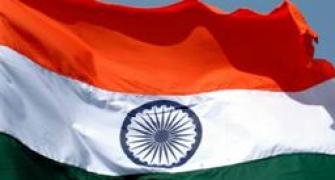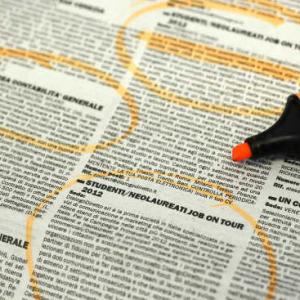 Community organisations draw up a demographic snapshot of America's fastest growing ethnic group. George Joseph reports
Community organisations draw up a demographic snapshot of America's fastest growing ethnic group. George Joseph reports
In a decade, between 2000 and 2010, the Indian community added almost 1.2 million people. If those with multiple ethnicities and Caribbean heritage are counted, the number goes up to 3.18 million.
In the 2000 Census, Indian Americans numbered 1,678,765. In 2010, it grew to 2,843,391, a growth rate of 69 per cent. With those claiming multiple ethnicities, it reached 3,183,063, a growth rate of 68 per cent.
This demographic snapshot, based primarily on Census 2010 data, was released by the Asian American Federation based in New York and South Asian Americans Leading Together in Washington, DC.
Currently, there are 3.4 million South Asians and 80 per cent of them are Indian, followed by Pakistanis, Bangladeshis, Sri Lankans, Nepalis and Bhutanese.
But the growth rate of Indian Americans was lower than that other South Asians. The Bangladeshis grew by 157 per cent, while the combined Bhutanese and Nepali populations grew by at least 155 per cent. The next fastest growing South Asian group was the Pakistanis at 137 per cent, followed by Sri Lankans and Indians.
Indians and Pakistanis are the third and seventh-largest Asian American ethnic groups, respectively. Bangladeshis, Nepalis, Sri Lankans and Bhutanese rank among the top 20 Asian American ethnic groups.
The South Asian community also includes the Diaspora -- past generations of South Asians who settled in other parts of the world, including Africa, Canada, the Caribbean, Europe, the Middle East, and the Pacific Islands before coming to the United States. It is estimated that at least 66,000 Caribbeans living in the US now trace their ancestry to India. The Indo-Caribbean population increased an estimated 23 per cent.
Among Asians, Chinese-Americans (3.79 million) remained on top, while Filipinos were in the second place (3.42 million). But the South Asian population emerged as the fastest growing ethnic group -- it rose 78 per cent over the past decade -- spreading to new areas of the country.
The growth rate of the Asian American and Hispanic American population as a whole stood at 43 per cent, while the non-Hispanic whites were at 1.2 per cent.
The fact sheet also cautioned that many South Asians were not counted in the census due to factors like: Non-Indians needing to write their ethnicity on census forms, as there was no column indicating their country; fear among certain populations, especially the undocumented, in participating in government surveys; and limited English proficiency.
Indians still prefer the Big Apple
The five states with the largest South Asian populations are California, New York, New Jersey, Texas and Illinois.
The metropolitan areas with the largest South Asian populations are New York City, Chicago, Washington, DC, Los Angeles, and San Francisco-Oakland. Over the past 10 years, the Washington DC metropolitan area has overtaken Los Angeles as the one with the third largest South Asian population.
New York remains the preferred city for Indians, Nepalis, Pakistanis and Sri Lankans. For the Bhutanese, it is Dallas. Significant numbers of them have also settled in Atlanta and Houston.
The Detroit and Philadelphia metropolitan areas appear in the top five locations for the Bangladeshi community.
The community has also experienced the greatest growth outside these traditional metropolitan areas. The population rose the most in Charlotte, North Carolina, increasing 187 per cent over the last decade. This was followed by Phoenix, Arizona; Richmond, Virginia; Raleigh, North Carolina; San Antonio, Texas; Seattle, Washington; Stockton, California; Jacksonville, Florida; Harrisburg, Pennsylvania; and Las Vegas, Nevada.
Among the 10 fastest growing South Asian metropolitan areas, only Seattle and Phoenix had more than 30,000 South Asians in 2010, while the smallest of the top 10 fastest growing areas was Harrisburg, with close to 6,500 South Asians. The remaining cities had between 10,000 and 25,000 South Asians.
Priya Murthy, policy director, SAALT, said, "What the latest Census figures show is that the South Asian population in the United States has grown tremendously over the past 10 years. Based on this data, it is undeniable that South Asians are increasingly contributing to the diversity of this country -- particularly in areas not traditionally known for having significant South Asian populations, such as Arizona, North Carolina, Florida, and Nevada."
Growing population, growing political clout
South Asians are becoming an increasingly powerful segment of the American electorate. When their numbers increased, the voters, too, went up.
Indians with US citizenship crossed the 1 million mark, reaching 1,154,308. The number of Indian voters doubled by 2010 decade from the 576,784 in 2000.
Bangladeshi voters grew from 8,527 to 43,829, a growth rate of 414 per cent. The growth rate for Pakistanis was 205 per cent, from 52,755 to 161,036.
Priya Murthy, policy director, SAALT, said, "The new data about the voting-age population in the South Asian community is striking. South Asians are becoming an increasingly powerful segment of the American electorate. This underscores the need for voter registration efforts, language access at the ballot box and education with both political parties about our community. Such initiatives are vital to ensure that South Asian community members are able to participate in this fundamental aspect of American democracy."
She added, "It also underscores how vital it is that policymakers and government agencies need to more deeply understand the challenges that this growing community is facing -- including immigration barriers, hate crimes and discrimination, health care needs, obstacles to civic and political engagement, and economic challenges. In addition, greater support is needed for local organisations that serve, organise and advocate on behalf of community members across the country."
Image: Jersey city celebrates Diwali on the streets.









